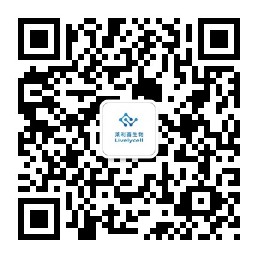icellgen干细胞分类
Introduction

iCellGen is a biotechnology company that specializes in the research and development of induced pluripotent stem cells (iPSCs). These stem cells have the ability to differentiate into any cell within the human body, offering tremendous potential for disease modeling, drug development, and regenerative medicine. In this article, we will discuss the different classifications of iPSCs used by iCellGen and their potential applications.
Classification of iPSCs
Autologous vs Allogeneic iPSCs
Autologous iPSCs are generated from a patients own cells, typically skin or blood cells, and are a perfect genetic match for the patient. As a result, they offer potential benefits for regenerative medicine applications as they can be used to replace damaged or diseased tissue without the risk of rejection. Allogeneic iPSCs, on the other hand, are generated from donor cells and have the potential to be used in a wider range of patients. However, there is a risk of rejection or immune response, which must be considered in therapeutic applications.
Disease-Specific vs General iPSCs
Disease-specific iPSCs are generated from patients with a particular disease and are used to study the disease in vitro, allowing researchers to understand the underlying biology and develop new therapies. General iPSCs are not disease-specific and can be used to model various diseases or for other applications such as drug screening.
Chemically Induced vs Virally Induced iPSCs
Chemically induced iPSCs are generated without genetic modification, using small molecule compounds to reprogram cells into an embryonic-like state. This approach offers a safer and more efficient method of generating iPSCs compared to virally induced methods, which use retroviruses to insert genetic material into cells. However, virally induced iPSCs are often preferred for disease modeling and drug development as they generate cells that more closely resemble the target tissue or organ.
Applications of iPSCs
Disease Modeling
Because iPSCs can be generated from patients with a specific disease, they offer a unique opportunity to study disease progression and develop new therapies. Researchers can differentiate iPSCs into various cell types affected by the disease, such as neurons in the case of Alzheimers disease or cardiomyocytes in the case of heart disease. By studying these cells in vitro, researchers can gain insight into the underlying mechanisms of the disease and test potential therapeutics.
Drug Development
iPSCs can also be used for drug development, allowing researchers to screen thousands of compounds quickly and efficiently. By differentiating iPSCs into the desired cell type, researchers can test the efficacy and safety of potential drugs on a large scale. This approach has the potential to save time and resources in the drug development process.
Regenerative Medicine
Autologous iPSCs offer tremendous potential for regenerative medicine applications, such as replacing damaged tissue or organs. iPSCs can be differentiated into the desired cell type and then transplanted back into the patient without the risk of rejection. This approach has already been used to treat patients with macular degeneration, a disease that causes blindness, by replacing damaged retinal cells with iPSC-derived cells.
Conclusion
iCellGen is at the forefront of iPSC research and development, offering numerous potential applications for disease modeling, drug development, and regenerative medicine. The classification of iPSCs, such as autologous vs allogeneic and disease-specific vs general, is critical for understanding their potential uses and limitations. With continued research and development, iPSCs have the potential to revolutionize the field of medicine and improve patient outcomes.
- 细胞储存记录填写指南
- 探索常州白泽:细胞储存机构指南
- 深圳华大干细胞储存:开启生命健康新篇章
- 渭南干细胞储存:全面解读费用详情
- 红细胞储存的理想温度
- 核酸在细胞中的储存
- 太保细胞储存计划:打造健康未来的明智选择
- 细胞储存中的血小板和红细胞储存
- 干细胞储存:解锁未来健康的投资指南
- 细胞储存类型全览:了解您的选择
干细胞最热文章
- 最近发表














